Having a website is an absolute must for any business, especially in a world where everything’s going digital. But getting your website noticed on Google is another matter, and not always easy.
In this article, we’re diving into our top 15 ways to get your website noticed on Google (and elsewhere online), so you can start bringing in visitors and growing your business.
These are the top 15 ways to make your website more visible:
- Target your website pages for keywords
- Structure your web pages for Google search
- Create more pages
- Get on online directories
- Get verified by Google
- Use compelling page titles
- Work with influencers
- Create quality content
- Optimize your images
- Use Google Ads
- Provide outstanding customer service
- Post to social media
- Be shareable
- Use local media
- Leverage small opportunities
- replica watches
- replica watches UK
- replica breitling watches
Let’s dive in!
How to get your website on Google
First and foremost, make sure your website can actually appear on Google. What this means is, make sure it’s set to allow indexing. This will look different depending on the website builder or CMS you’re using, but the good news is, most of them will make it VERY clear if you’re not set to index.
But even if your site is being indexed, every so often, you might find a page that is not indexing. There are a few tools that can help with this. Google Search Console can diagnose indexation errors. You can also look right in your CMS. For example, in WordPress, using the Yoast plugin, there’s a setting that will say something like: “Allow search engines to show this post in search results?:

Alright, now that that’s out of the way, let’s talk about how to not just get on Google, but how to be visible on Google.
How to get your website noticed by Google
As you may or may not be aware, Google is the biggest game in town when it comes to getting your website noticed. Here’s how to increase your website’s visibility in Google’s all-important search rankings.
1. Target keywords with your website
Google doesn’t just notice good websites. It notices relevant website pages that are best suited for specific searches.
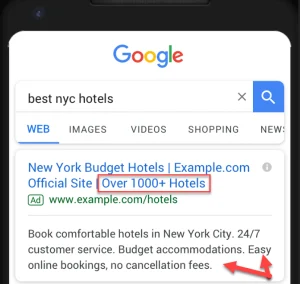
Writing keyword-relevant ads with high quality scores is one thing. But you also need to consider your on-page SEO.
Make sure each page of your website clearly targets a specific topic. That means conducting in-depth keyword research to find high-volume, relevant keywords, and incorporating those keywords on your page and in your meta tags. The more specific and targeted the topic, the greater the opportunity each page has to show up on the first page of Google and get noticed.
2. Make it easy for Google to crawl your pages
Google is constantly crawling the web, adding new pages to its index, and updating its profile of existing pages. The easier you make it for Google to go through your website and learn what it needs to learn, the more quickly it can add you to its index and retrieve it for searches. This means:
• Inserting keywords related to your targeted topic in the meta title, URL, meta description, and image tags of your pages (a core component of image SEO).
• Internally linking your website’s pages so that your website as a whole is easier to crawl (and more authoritative).
• Running a technical SEO audit of your site to ensure there are no indexation holes.
3. Build more website pages
Have you started a blog yet? A blog is hands down the best way to increase your website’s organic reach. Each blog post is an opportunity to get noticed on Google and rank for a more diverse set of keywords.
However, don’t make the mistake of starting a blog just for the extra pages. Google ranks blog posts (and people visit them) because they provide helpful information or advice. If your blog is a trusted that resource increases the value you bring to the table, it will most definitely help your website to get noticed by people seeking information on Google.
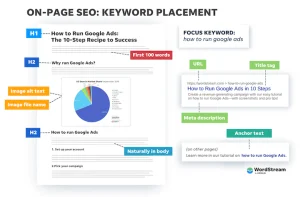
4. Add your website to online directories
Want to get your website noticed off Google? There are a ton of online channels where you can create profiles and add your website. The more places you list your business and add your website, the more frequently you can get noticed over your competitors. Here’s where to get listed:
- Yelp
- Google My Business (More on this below)
- Local.com
- Manta
- Yellowpages.com
- CitySearch
- Metromix
- Kudzu
- City-Data
- Angieslist
- BBB.org
- Foursquare
- LocalGuides
For example, Stateside Vinyl Siding has a Google My Business listing, so it shows up when you perform a Google Maps search for vinyl siding in Pawtucket. Clicking on the listing displays their website.

The more places you list your website, the more opportunities you have to get your website noticed.
5. Get verified by Google
Google crawls the web and discovers your website pages depending on how easy they are to read and categorize. Want to allow Google to crawl your pages even more efficiently? Submit your business to Google Maps using Google My Business.
Here’s how to do it:
- Create a Google My Business account
- Find your business on Google Maps
- Claim your business on Google Maps
It’s that easy. The final step is waiting for a physical verification code in the mail and entering it in your Google My Business profile.
Once you’ve claimed your business, you will be verified by Google and have the ability to optimize your Google My Business listing. The more complete your business listing is, the more your business (and website) will start picking up impressions and clicks (i.e. getting noticed) on Google.
6. Use compelling titles
Adding keywords to the titles of your website pages will help both Google and searchers to identify them. But you want to get noticed, not just identified. To get noticed, create compelling titles—that is, aim to stand out (but don’t overpromise anything or overdo it!).

A compelling title can go a long way in helping you increase click-through rate.
For example, if you’re a massage therapist and you’ve got a blog post on the benefits of hot stone massage, consider these titles:
- Not compelling: “Benefits of Hot Stone Massage”
- Too extreme: “Why Hot Stone Massage Will Change Your Life”
- Compelling: “6 Reasons to Try a Hot Stone Massage” or “6 Ways Hot Stone Massage Can Improve Your Health”
7. Reach out to websites and blogs that have already been noticed by Google
Look for bloggers and influencers in your industry who have already captured the attention of a large audience. For example,
- Invite them to do a guest blog post on your blog. They will promote the post to their audience, which will help get your website noticed by a whole host of net new prospects.
- Ask to get featured in one of their round-up, review, or social media posts with a link to your website.
- Offer to write a guest post for their blog, with a link to your website in the post or the author bio.
Regardless of which approach you take, be sure to reciprocate or offer something of equal value in exchange. Look for partnerships and collaborations that are symbiotic, in which both parties help one another reach a broader audience.
8. Write quality content
Writing about keywords and properly placing those keywords on your pages will help Google notice you, but if you want more people to notice you, you’ve got to rank higher.
The secret to ranking higher on Google is quality. There are no shortcuts. Google looks at how long visitors are staying on your site and whether they are navigating to other pages before exiting. To write an awesome blog post that gets noticed, be sure to:
- Dive deep into topics and answer the most common questions associated with your keywords
- Include images, videos, and other media to hold attention and increase dwell time
- Aim to provide an experience with your website (not just answers)
- Monitor load times and optimize for mobile
- Obtain backlinks from other trusted sources on Google
Focusing on quality rather than ranking will actually help your business to rank higher on Google and get noticed by more people. Use our content audit templates to make sure you’re putting your best work out there.
9. Use compelling images
People search Google images more than you may think. If you have high-quality photos of your products or services, be sure they’re optimized to rank in an image search by doing the following:
- Choose an appropriate file name
- Keep the file size small to reduce load time
- Add captions
- Use alt text and title text
- Include images in your XML sitemaps
These website examples should provide plenty of image inspiration for you.
10. Run Google Ads
Paid search ads require a monetary investment. That said, they can seriously increase your online exposure. For example, if you search “personal trainer Boston,” this is what you see:
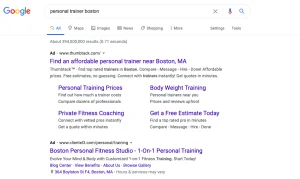
Google Ads costs money, yes. But they also convert very well on average. Advertising on Google is a surefire way to get your brand to the top of the search results; and if not to the top, then to ensure you at least have more coverage.
Other ways to improve your website visibility
11. Provide review-worthy services
The majority of directories allow users to sort results based on the number of positive reviews. That means that the quantity and quality of your reviews is extremely important.

The same goes for Google. The more reviews you have, and the better they are, the higher the chance is that a user clicks on your listing.
To get more reviews on Google and other platforms, make sure to:
- Provide outstanding services to your current AND potential customers. Value each individual, be genuine and transparent, and work to quickly resolve any issues. Do all that, and you’re bound to acquire positive reviews.
- Ask! Don’t be afraid to ask satisfied customers to drop you a five-star review. Most of the time, they will be happy to do so (as long as you make it easy for them). If you’re feeling hesitant, start with a few loyal customers first. (How to ask for reviews here.)
- Respond to your reviews, both positive and negative.
Higher reviews will rank you higher on Google and directory searches, helping your business to get noticed by those who matter.
12. Post to social media
One of the simplest (and most cost-efficient) ways to get your website noticed is to actively post to your business’s social media accounts.
You don’t have to promote your business every time you post something. A good rule is this: about 20% of your posts should directly promote your business. The rest should be in the realm of helpful how-tos and guides you’ve created, or other content you find interesting.
Stay actively engaged on social media to get your posts to stand out. For example:
- Ask conversation-starting questions
- Answer your followers questions (being funny is a bonus!)

- Join LinkedIn and Facebook groups
- Direct people who have asked questions on social media to your site for answers
Note also that your social media profiles and posts can sometimes show on the first page.
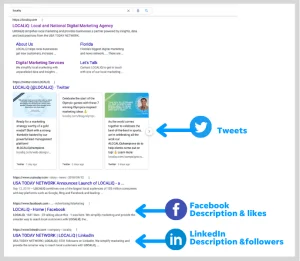
13. Shareability = noticeability
Rather than just your social media followers, why not get your followers’ followers to notice your website too? Use images, compelling captions, and relevant topics to maximize the appeal of your posts. If you link to a brand you like in one of your blog posts, make sure to let that brand know on social media or via email.
This can cause a snowball effect of reposts and help you to cast an even wider virtual net.
14. Use local media
Plenty of local media outlets will give you mentions in their publications for free or for a reasonable fee.
If you’re willing to shell out some billboard dollars, try out-of-home advertising.
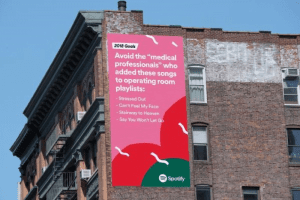
Reach out to local papers, magazines, radio stations and news channels with an interesting story about your organization or upcoming event and direct traffic to your website for more information. Placing ads in newspapers and local publications will also help to garner some newcomers to your site.
15. Seize small opportunities to get noticed
Promote your website anywhere you can. Include it in your email signature, on promotional flyers, on invoices, and on receipts. You may even want to slap a decal on your car! The more eyes you get on your URL, the more people you’ll see visiting your website.

